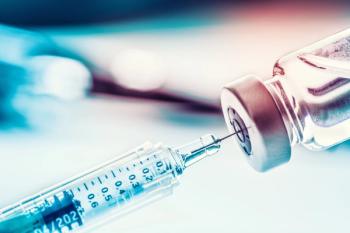
Vaccine Recommendations in the Pediatric Population
Experts in pediatrics review current COVID-19 vaccination guidelines, recommendations for dose intervals, and barriers to vaccinating children.
Episodes in this series

Sean O’Leary, MD: We talked about the vaccine recommendations if you’re vaccinating. And this is something I think got lost in some of the messaging, which is the interval between your first and second doses. Very early on, well the recommendation is still, you get your dose, and for Pfizer, 3 weeks later; Moderna, 4 weeks later. But there’s some leeway in that because what we found is one, you might get a better immune response if you delay that second dose, say to 8 weeks or 12 weeks even. Two, it appears that the risk for myocarditis goes down quite a bit in that older age, those high-risk age groups. If, for example, you have a 17-year-old in your office who has never received the vaccine and now we’re in a low period of COVID-19 circulation right at this moment, there’s not as much urgency to get that second dose in. Therefore, I would absolutely recommend doing more of an 8-12-week interval as opposed to a 4-week interval. That may not be as important for the younger kids, but there is some leeway in the recommendation in terms of 3-8 weeks or 4-8 weeks, which I think is fine to follow.
Tina Tan, MD: Now that you bring all this up, what are the latest guidance and updates from the CDC [Centers for Disease Control and Prevention] with regards to giving COVID-19 vaccination to children?
Sean O’Leary, MD: The current recommendations are still: primary series for anyone who’s not been vaccinated, boosters for anyone who is more than 8 weeks from their last vaccine, which is all fairly straightforward. But also, what I was just talking about with the intervals, is actually built into the recommendations. So, it is allowed to do that. They don’t say you should do that, but it is within the recommendation.
Tina Tan, MD: Well, now that the COVID-19 vaccines have actually been added to the routinely recommended childhood immunization schedule, do you think that’s going to help increase not only awareness but also vaccination rates? Especially among younger children, say between 6 months- 4 years of age, where the rates of vaccination are not very good at all.
Sean O’Leary, MD: No. They’re not very good. I think there are several factors. I think that will probably help, but I don’t know how much. What I will say is, I think there are many other barriers besides parents not wanting to get the vaccine there. I think, as we talked about, it’s a bit complicated. There are a lot of different formulations right now. It’s hard to stock these vaccines for a lot of practices and the whole multi-dose vial issue is a huge issue for a lot of practices because early on, there was this concept of “don’t you dare waste a dose.”
The CDC and public health had moved away from that, but most pediatricians don’t want to crack a new vial at the end of the day when they know they are going to waste 9 doses. I think there are a lot of logistical issues that are being worked out. I think things are going to get better with these things as we move forward in the coming months. I think knocking down the sort of provider-level barriers to vaccination are going to help a lot. Simplifying the recommendations, I think will help a lot. So, if you just need a single dose and you’re good for the year, that’s going to be a lot simpler. I think there are a number of factors that’ll play into potentially increasing uptake over time.
Transcript edited for clarity
Newsletter
Access practical, evidence-based guidance to support better care for our youngest patients. Join our email list for the latest clinical updates.











